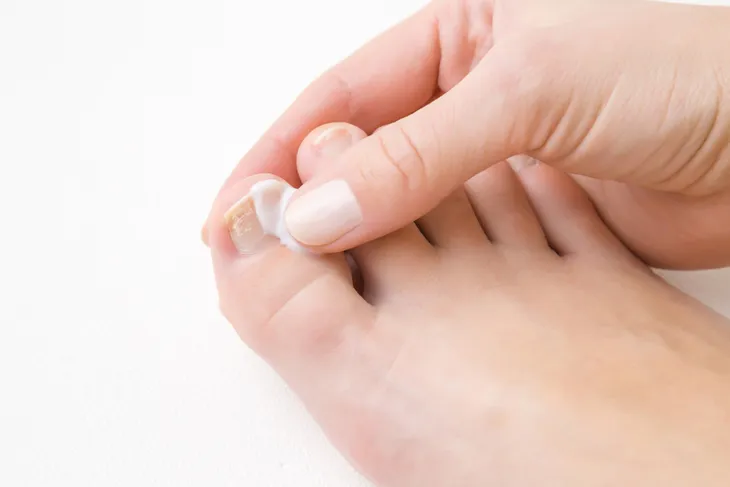The pain and discomfort experienced with an ingrown toenail can be quite high, with some people experiencing numerous ingrown toenails throughout their lives. As humans, we’re on our feet wearing all kinds of footwear all day long, and the last thing you need to put a damper on your day (or week, for that matter) is a painful ingrown toenail. On top of discomfort, an ingrown toenail can be very debilitating and cause severe sensitivity to wearing footwear and socks. Understanding the causes, how to treat them, and how to prevent them will help you get the relief you need.
What Causes Ingrown Toenails?
If you’re reading this article, chances are that you either have an ingrown toenail currently or you’ve experienced them in the past and hope to never have another one again. And you might be wondering what causes them to occur in the first place?
Ingrown toenails occur in both women and men equally and typically cause pain, redness, and swelling. The toenail grows into the surrounding skin. This can be the result of many factors, from improper toenail hygiene to trauma and more. Let’s take a look at these causes in more depth next.
Improper Toenail Hygiene and Care
We’ve all seen those people who let their toenails grow a bit too long. On top of being unsightly and unhygienic, improper trimming can cause your toenails to grow in different directions and result in ingrown toenails.
Ingrown toenails generally happen when the toenail is not cut straight across. So, do not try to trim the edges of your toenails to make a rounded shape. When those edges grow back, they can grow into the skin, causing an ingrowth.
Furthermore, if you don’t stay up to date with your foot hygiene and proper cleaning, bacteria can build up under your toenail,s leading to poor nail health.
Trauma
Injuring your toenail can also cause ingrown toenails. For example, if you stub your toe or drop something heavy on your foot, the trauma can cause deformities in how your toenails continue to grow.
Whenever you injure your feet or toenails, ensure you are getting them properly cared for and looked after to avoid future issues.
Footwear
We all wear footwear every day. When it comes to going to work or out to formal events, we typically wear the style of footwear that looks the best but it might not necessarily be the best option when it comes to promoting foot health.
In some cases, poor-fitting footwear can be the cause of your ingrown toenails, especially if they’re too tight around your toes. Be sure to find footwear that fits comfortably and has a roomy toe box.
Genetics
For some, your genetics will play a large role in your susceptibility to experiencing ingrown toenails. If you have an abnormal foot shape, you might be predisposed to having your nails grow in different directions, ultimately causing ingrown toenails.
So, while ingrown toenails themselves aren’t genetic, certain genetic factors can indirectly make you more susceptible to them.
How to Prevent Ingrown Toenails
Wear Shoes That Fit Properly
As we now know, wearing shoes that fit properly is so important if you want to help prevent your chances of an ingrown toenail. A properly fitting shoe should allow your toes to have enough room to move around in the tips of your shoes.
Keep this rule in mind: if you can’t move your toes, your shoes are too tight. Either loosen the laces or purchase a larger size because keeping your toes squished together can lead to painful ingrown toenails.
Check Your Feet Regularly
Either inspect your feet yourself or visit a podiatrist who can inspect them for you. Staying on top of your feet health can keep you mobile and independent. Leaving ingrown toenails or other nail and foot conditions untreated can be extremely painful and debilitating.
Protect Your Feet
If you’re working a job that requires you to be on your feet all day long or is quite labor-intensive, make sure you are protecting your feet. This can be accomplished by choosing the correct footwear such as steel-toe shoes, podiatrist recommended footwear that supports your feet, and ensuring that the toe box is large enough for your toes to move around.
Protecting your feet from overuse and trauma can help you prevent ingrown toenails from occurring.
How to Treat Ingrown Toenails
Everyone knows ingrown toenails are never a fun experience. Luckily there are a variety of treatments that you and your health professional can try to relieve your pain and discomfort. Let’s take a look!
Soak Your Feet and Protect Your Toes
Prepare a warm soapy bath for your feet and let them soak for around 20-minutes every day. Soaking your foot can help to decrease the pain, discomfort, and sometimes even the swelling. After you’ve soaked your foot take a piece of unflavored dental floss or cotton ball under the ingrown edges of the toenail. This will encourage the nail to grow properly.
You should also make an effort to protect your toes. If you search “toe protector” online, you will come across dozens of different styles to help keep your toes protected when wearing socks and footwear. If you can decrease the amount of friction on your injured toe when wearing footwear, you’ll be able to keep your pain levels relatively low.
Antibiotics
Visiting your local pharmacist and purchasing an antibiotic cream can help decrease the risk of infection surrounding your ingrown toenail.
This ointment will also help to ease any pain and discomfort you are experiencing, all while promoting healing of the nail. Talk to your doctor to find out if this is the right treatment for you.
Nail Surgery
In severe cases of ingrown toenails, your general practitioner might decide it’s best to remove a portion or the entire nail to relieve your pain and discomfort. Although this treatment option is usually the last resort. Typically, your health professional will have you try the strategies listed above before this is considered.















